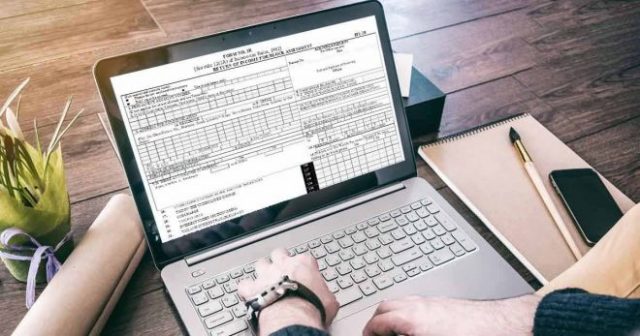Every year, we as taxpayers need to timely file our income tax return (ITR), right? That is the time many of rush to CAs (chartered accountants) so that they can help in ITR filing with their expertise and knowledge. While that is totally fine, you can also try to file your ITR on your own. All you need is a stable internet connection on your desktop/laptop or even mobile phone, and having the required documents handy when filing ITR.
So, before discussing the steps involved in online filing of ITR, ensure you have as a taxpayer have the following documents handy:
Important Documents To Have When Filing ITR
PAN
– From 26AS, AIS
– Bank Statements
– Form 16
Here’s a step by step guide on how to file your ITR online on your own:
Step 1: Login on ITR website
-Visit the official Income Tax e-filing website and click on ‘Login’.
-Enter your PAN in the User ID section. Click on ‘Continue’.
-Check the security message in the tick-box.
-Enter you password and click on ‘Continue’
Step 2: Select ‘File Income Tax Return’ Option
Now click on ‘e-File’ tab > ‘Income Tax Returns’ > ‘File Income Tax Return’
Also Read– GST Council may soon clarify tax exemption to RERA
Step 3: Choose The Right ‘Assessment Year’
Choose ‘Assessment Year’ as ‘AY 2023-24’ and mode of filing as ‘Online’
Step 4: Select Your Filing Status
Select your preferred filing status: Individual, HUF, or Others. Opt for ‘Individual’ and ‘Continue’.
Step 5: Carefully Choose Your ITR Type
Now, choose the right ITR type. The taxpayer must first ascertain which ITR form they must fill out before proceeding to file returns. There are a total of 7 ITR forms available.
Step 6: Select The Reason For Filing ITR
In the following step, you will be prompted to specify the reason for filing your ITR. Select the appropriate reason that is applicable to your situation:
-Taxable income is more than basic exemption limit
-Meets specific criteria and mandatorily required to file ITR
-Others
Step 7: Add Bank Account Details & Other Information
In this step you need to provide your bank account information. If you have already provided these details, ensure they are pre-validated. Now confirm the summary of your returns and validate all the details.
Also Read– Tax Deducted From Salary? How To Avoid Higher Income Tax Under New Or Old Tax Regime
Step 8: Do Not Forget To Verify Your ITR
The last but crucial step in ITR filing process is to verify your return. Failing to verify your return is equivalent to not filing it at all. You have the option to e-verify your return using different methods such as Aadhaar OTP, electronic verification code (EVC), Net Banking, or by sending a physical copy.





































